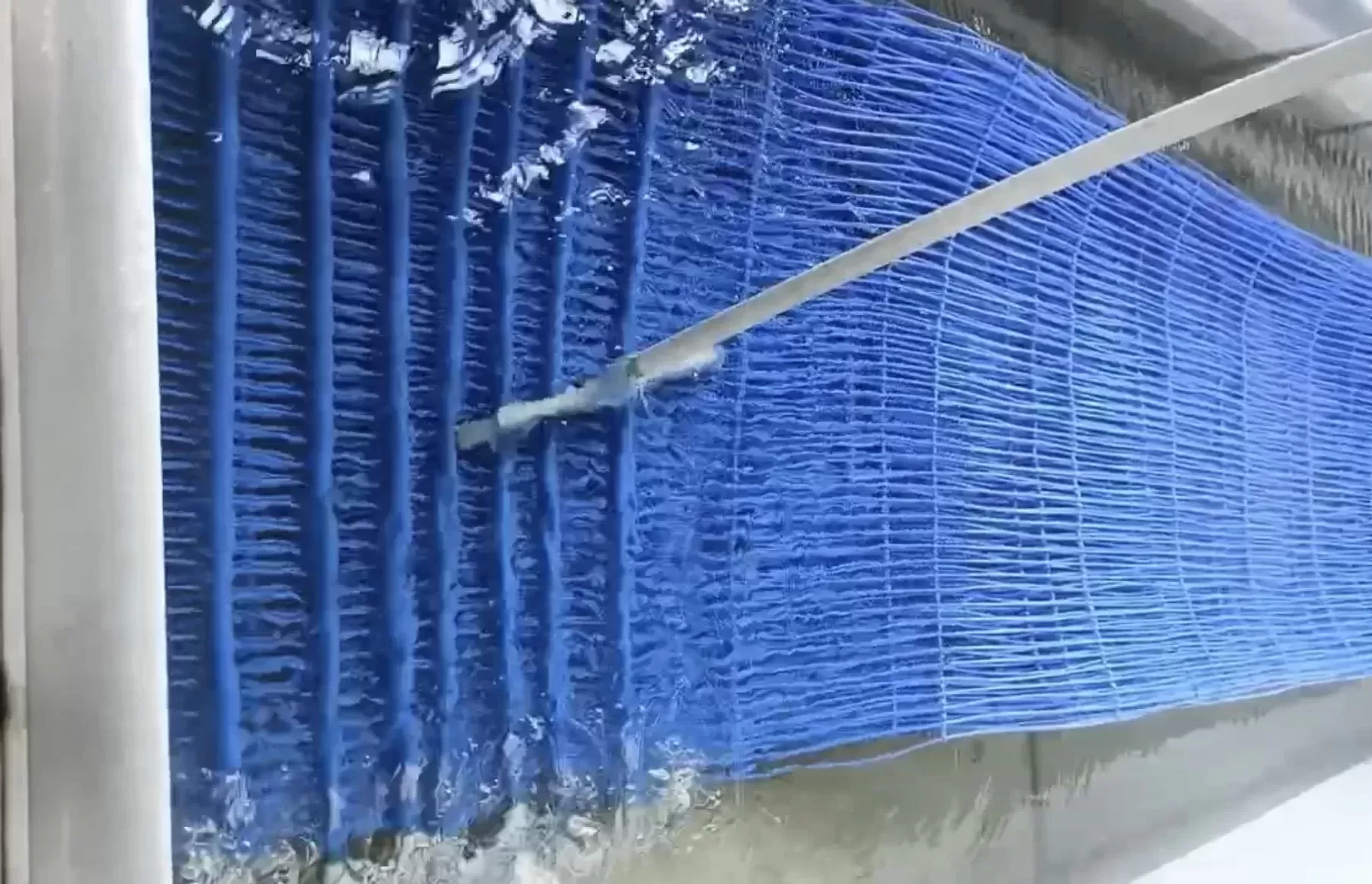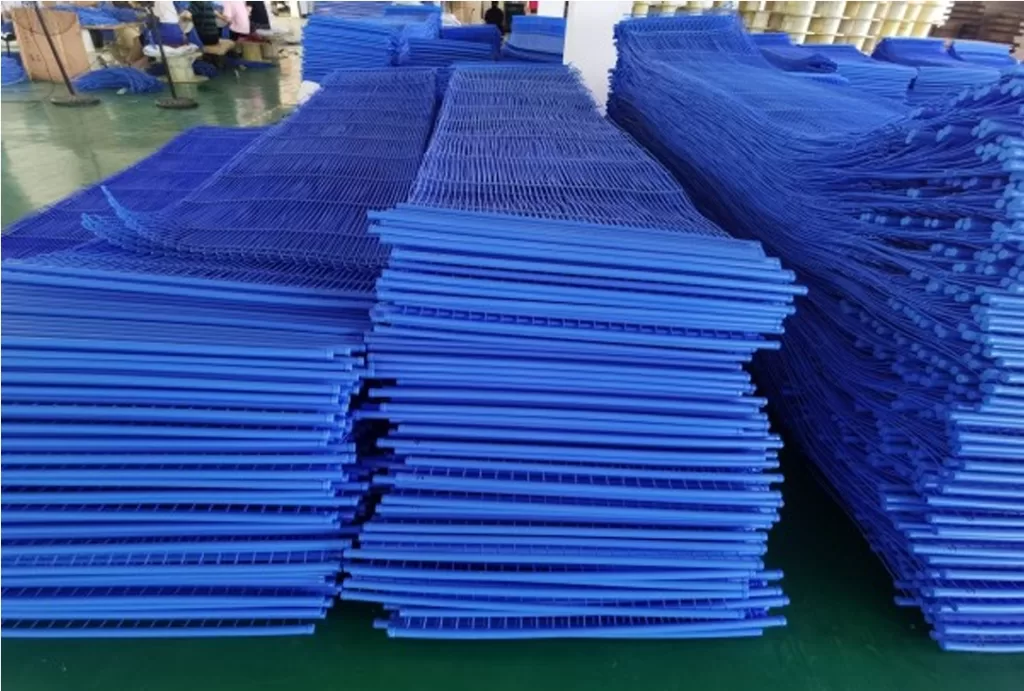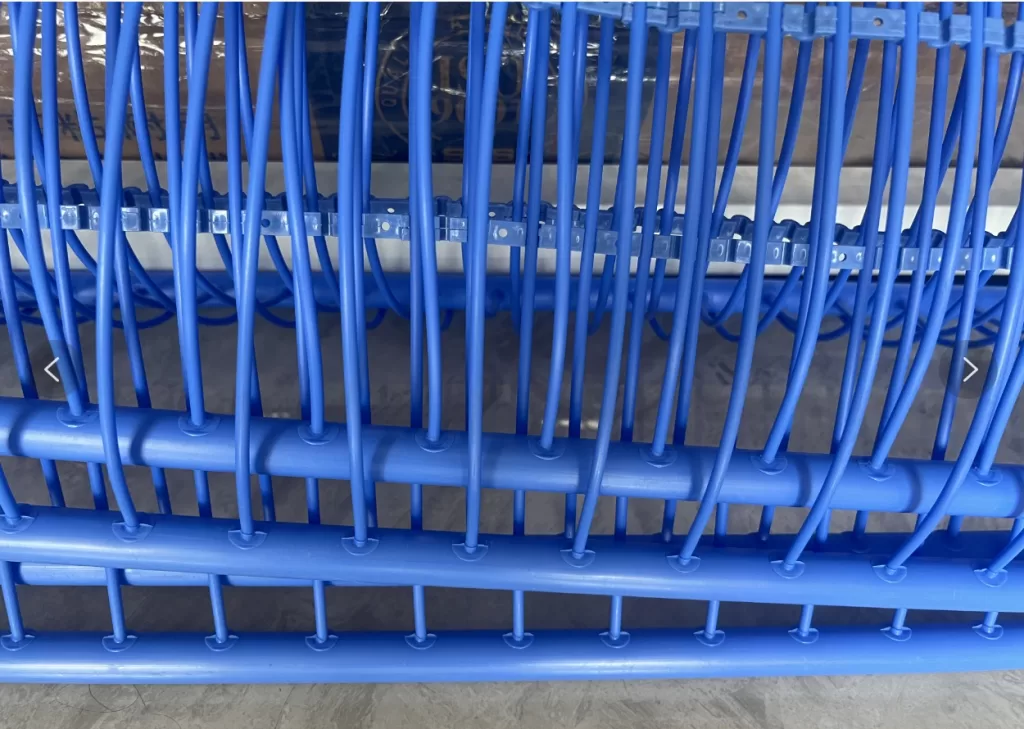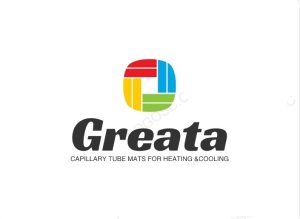50 Year used for Capillary tube mat CE apporved



50 Year used for Capillary tube mat
capillary tube mats are manufactured on special machines at our location in suzhou,china in compliance with strict quality regulations. Every production step is checked and recorded. The construction dimensions of the individual mats and in particular the welded connections between the capillary tubes and the main tubes are designed for durability and reliability. The polypropylene used is pure and of high quality.
Our quality standards ensure that air conditioning with capillary tube technology is not only natural but also durable. With a 15-year guarantee on all greata capillary tube mats, we express our conviction and offer our customers maximum security.
A capillary tube mat is a type of heat transfer device that uses multiple small diameter tubes to transfer heat between two fluids. The mat consists of a network of capillary tubes that are usually made of a highly conductive material, such as copper or aluminum. These tubes are typically very thin and have a small diameter, allowing for efficient heat transfer.
Capillary tube mats are often used in heat exchangers and cooling systems, where they can help to transfer heat from one fluid to another. They are designed to maximize the surface area available for heat transfer, while also minimizing pressure drop and fluid friction.
The small diameter of the capillary tubes allows for a high surface area-to-volume ratio, which aids in efficient heat transfer. The capillary action of the tubes helps to evenly distribute the fluid throughout the mat, ensuring effective heat transfer across the entire surface.
Overall, capillary tube mats offer a compact and efficient solution for heat transfer applications, providing a high degree of thermal performance in a small footprint.
Water capillary tube mats are the key element of the Greata system.
The capillary tubes are made from high good quality polypropylene (PP-R) – an environmentally friendly and safe plastic with excellent thermal management and elasticity properties. Capillary tube mat have Safe gurantee of up to 55years .
Diameter of capillary tubes – 3,4 *O.5or 4,3 mm*0.8 or 3,5,
what is price for 4.3*0.8 per squaremetre, it is cost at 9usd/squaremetre.
what is price for 3.4*0.5 per squaremetre, it is cost at 12usd/squaremetre.
50 Year used for Capillary tube mat ,additional advantages in safety, maintenance and quality:
Prior to operation, the safety of the water capillary system is verified with air pressure at 20 bar and water pressure at 10 bar; the system is filled only once.
Water capillary mats can be easily repaired; a capillary is cut and both ends are welded – with no effect to the heating/cooling output.
Water capillary mats do not require maintenance and have a safety guarantee of up to 55 years.
|
Material: |
PP-R (Polypropylene Random Copolymer) |
|
ø Main PPR pipe: |
20 x 2 mm |
|
ø Capillary tube: |
4.3 x 0.8 mm or 3.35 x 0.55 mm |
|
Distance between capillaries: |
10-20-30 mm |
|
Length: |
Type S: 600 – 8000 mm Type G: 600-16000 mm |
|
Width: |
150 – 1000 mm |
|
Spec. exchange surface: |
0,72 – 1,05 m² / m² capillary mat surface |
|
Spec. weight: |
ca. 190 – 880 g / m² capillary mat surface |
|
Spec. water capacity: |
0,2 – 0,57 l / m² capillary mat surface |
|
Spec. total weight: |
ca. 390 – 1450 g / m² capillary mat surface (without main pipes) |
|
Colour: |
green, light grey, neutral white (can be tinted, if necessary) |
|
Maximum temperature in the system: |
+50° C |
|
Optimal input temperature for heating: |
+ 28-32° C |
|
Optimal input temperature for cooling: |
+ 16-18 ° C |
|
Optimal pressure in the system: |
2-3 bar |
|
Factory test pressure: |
20 bar |
1. What is a capillary tube mats and technical data?
The capillary grid (4.3 * 0.8mm PPR raw material) imported from Nordic chemical industry replaces the traditional indoor unit and is installed inside the building. It is invisible. It relies on water as the cooling and heating medium for cooling and heating. It mimics the capillary structure of human body and has the characteristics of high temperature resistance, high pressure resistance, corrosion resistance, large heat exchange area, good thermal conductivity, uniform heat exchange and small hydraulic loss;
The inlet water is about 16-22 ℃ in summer, the return water is about 19 ℃, the inlet water is about 30-35 ℃ in winter, and the return water is about 33 ℃. Through circulating heating or cooling the water in the capillary grid, the heat or cooling capacity of the indoor environment is provided, and the effect of constant temperature in four seasons is achieved.
2. High comfort
Practice shows that radiation is the most comfortable heat transfer mode. However, 60% of the cooling capacity and heat of the capillary network radiant air-conditioning terminal system are conducted by radiation, so it is more comfortable than other terminal forms.
3. The quietest air conditioning system.
Compared with the traditional fan coil unit (fan coil unit has indoor moving parts such as motor and fan, which will generate about 35-45db noise), the capillary radiation air conditioning system has no indoor moving parts, and will not generate any indoor noise. It is a quieter air conditioning system.
4. There is no condensate tray and no source of bacteria.
The capillary mat is embedded in the ceiling or wall, and mainly relies on radiation heat transfer to supply cooling or heat to the building. Compared with the fan coil, there is no condensate system, and there will be no poor drainage and water dripping. There is also no phenomenon that bacteria breed in the drip tray of traditional fan coil units and affect the indoor sanitary conditions.
5. The energy saving effect is remarkable.
Generally, the water supply temperature of the capillary system is 16-22 degrees in summer and 30-35 degrees in winter. Compared with the traditional air conditioner, it has a higher water supply temperature in summer and a lower water supply temperature in winter, which can save a lot of energy.
6. Strong cold / heat storage capacity.
The temperature will not increase (summer) or decrease (winter) for a long time in the state of system shutdown or power failure.
7. Strong self-adjusting and balancing ability.
In summer, with the increase of indoor temperature and the temperature difference of radiation surface, the radiation cooling capacity is increased. In winter, with the decrease of indoor temperature and the increase of temperature difference of radiation surface, the radiation heat is increased.
8. The capillary end occupies a small building clearance and saves floor height.
Under the leveled ceiling or part of the wall surface in the air-conditioned room, first lay the capillary net and mesh cloth, and then apply two layers of 5-10mm thick putty to form the radiation surface.
9. Flexible capillary arrangement and convenient construction.
Due to the relatively light weight of the capillary tube (the weight of the net filled with water is only 370 g / m2), the arrangement is flexible, and there are many installation methods, such as ceiling plastering installation and wall plastering installation, which are convenient for construction.
10. It is especially suitable for use with air source heat pump and ground source heat pump to achieve more energy-saving effect.
11. Safe and reliable, long service life,50 Year used for Capillary tube mat
The capillary network is subject to strict quality control and testing in production to ensure its safety and precision. Before each product leaves the factory, it must undergo a long-term strict test of 10bar, with high reliability.
After installation, the system must be tested again with a pressure of 10bar, so that the damage can be immediately found on site and solved. After the whole system is installed, the capillary network system shall be subject to multi-level strict test again according to the working standard.

